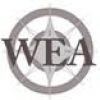Integrated Assessment of the Socioeconomic Systems’ Development
Vol. 11, No 1, 2018
|
Romualdas Ginevičius,
Vilnius Gediminas Technical University, Vilnius, Lithuania, E-mail: romualdas.ginevicius@vgtu.lt |
INTEGRATED ASSESSMENT OF THE SOCIOECONOMIC SYSTEMS’ DEVELOPMENT |
|
Dainora Gedvilaitė,
Vilnius Gediminas Technical University, Vilnius, Lithuania, E-mail: dainora.gedvilaite@vgtu.lt Andrius Stasiukynas,
Vilnius Gediminas Technical University, Vilnius, Lithuania, E-mail: andrius@snowarena.lt Martin Čepel,
Paneuropean University in Bratislava, Bratislava, Slovak Republic, E-mail: cepel@benzinol.com
|
Abstract. A permanent property applicable to every socioeconomic system (SES) is its development. SES development is an integrated process with two sides that can be distinguished, i.e. quantitative and qualitative ones. The quantitative side reflects its static aspect, i.e. the state of the development at a certain point in time. The qualitative side of development reflects its dynamics, i.e. the scope of development changes. In order to make an integrated assessment of the standing of SES development, both these aspects above have to be assessed in a quantitative manner and be further combined into one generalised value. These days, assessment of the standing of SES development is limited to evaluation of the achieved level only, i.e. its quantitative assessment. Due to the fact that all socioeconomic systems are always large and complex systems, they tend to have a multitude of aspects. The indicators that reflect such aspects form a system thereof. It is thus the basis for further multicriteria assessment of the development state. In order to reduce the number of indicators to be assessed simultaneously so that experts could establish the weights thereof in a sufficiently accurate manner, a hierarchically structured system of indicators is developed and presented here. Following this methodology, the level of economic development across Lithuanian regions has been determined. When the scope of development changes was established on that basis, the integrated indicator of the regional development state was calculated following the proposed formula. On the basis of the correlation-regression analysis, it has been determined that the scope of development changes is larger in the regions with lower level of development achieved. |
|
Received: October, 2017 1st Revision: January, 2018 Accepted: February, 2018 |
|
|
DOI: 10.14254/2071-789X.2018/11-1/1 |
|
|
JEL Classification: O1, Q01 |
Keywords: socioeconomic systems (SES), SES development, multicriteria assessment, integrated assessment, economic development |













